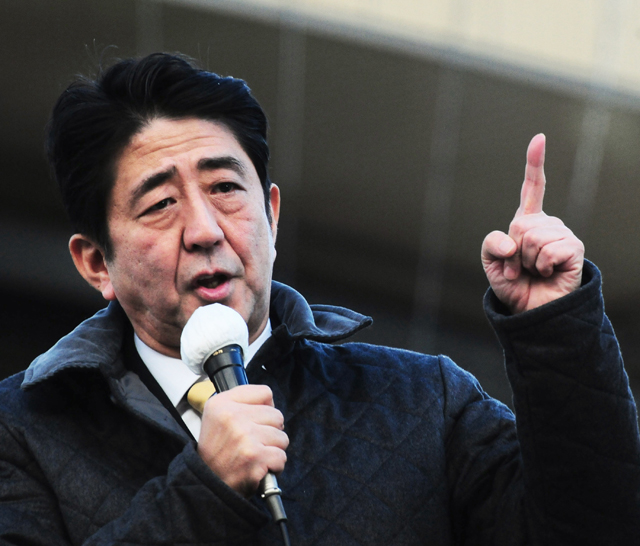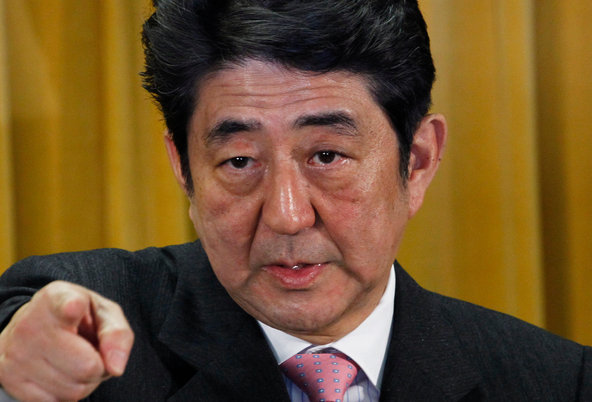An article by Michael Cucek in his Shisaku blog highlights the political ends to which Shinto is currently being put by the nationalist administration led by prime minister, Shinzo Abe. Underlying the policy is a desire to reinstate the ideology of pre-war State Shinto, and the recent Yasukuni visits by members of the cabinet are clearly part of an orchestrated step-by-step movement in that direction, as the following makes plain…
Apologists for Yasukuni like to pretend that the prime ministerial visits are religious in nature. How gullible can one be? Naivity can be no excuse for complicity in the agenda of the extreme right, and the recent controversial secrets law, which curtails freedom of expression, indicates how serious is the present situation. There is a point at which one has to stand up and take sides, and that point may well be upon us. For those of us sympathetic to the roots of Shinto, these are difficult times indeed.
**********************************************************************
He’s Pro-Shinto, But Not That Pro-Shinto FRIDAY, JANUARY 03, 2014 by Michael Cucek
Shisaku posts normally contain at least two or three typos, due to my own unfortunate haste and the reality that this is a private sharing of information and opinion.
The Huffington Post, by contrast, is a commercial venture, where an urge to preserve a modicum of decorum would predicate a second set of eyes perusing a piece prior to its publication on the website. Which is what makes today’s featured Huffington Post post on Japan so very special [in that the author makes the glaring error of referring to the Japanese prime minister as ‘Shinto Abe’ instead of Shinzo Abe].

Shinzo Abe, or Shinto Abe?
The author, Dr. Peter Navarro, is a professor at the University of California, Irvine (I am not making this up). His personal website directs you to to his documentary site, deathbychina.com, where, among other things, one can download a free copy of the “Death by China” theme song (I am not making this up, either).
Of special note is the author’s having the prime minister visiting the “Yasukuni Shin” — which, one must assume, is somewhere in between the Yasukuni Foot and the Yasukuni Knee.
For the record, Abe Shinzo is a Shinto chauvinist, meaning that he not only publicly participates in Shinto rituals whilst in the dress of a public official, but he is leader or significant member of a number of political organizations aiming to promote a politico-social role for Shinto.
Abe is the chairman of the Shinto Political Alliance Diet Member’s Roundtable (Shinto seiji renmei kokkai giin kondankai), the Diet arm of the Shinto Political Alliance (Shinto seiji renmei, or Shinseiren), an organization established in 1966 to combat, according to the organization’s website, the spirit of postwar materialism and the accelerating loss of memory of what is Japanese and what it means to be a Japanese.
Abe is also the chairman of Japan’s Rebirth (Sosei Nippon)*, an organization recently featured here. Japan’s Rebirth seeks a reawakening of the pride of the Japanese people in their history and culture, with a special focus of the Imperial House. Given the prominence of the thought of Yoshida Shoin in the organization’s literature (Yoshida’s spirit being, in Prime Minister Abe’s life, a focus of special reverence) and given the special mention in the group’s guiding principles to a fight against permanent residents receiving the right to vote in local elections. Sosei Nippon should be seen as a rinsed and limp version of the 19th century’s sonno joi (“Revere the Emperor/Expel the Barbarian”) movement. As such, Shinto, particularly a version of State Shinto, is definitely in the Japan’s Rebirth tool set.
Abe has always been a prominent member, of course, of the Association of Diet Members for Worshiping at Yasukuni Shrine Together (Minna de Yasukuni jinja ni sanpai suru giin no kai) which organizes the Yasukuni mass visits of Diet members and advocates a a normalization of Yasukuni to the point where Cabinet members and the Emperor pay regular official visits to the shrine.
So yes, Professor Navarro, there is a “Shinto Abe” — but only in spirit, not name.
**********************************************************
* What is Sosei Nippon?
For a description of the organization in English there is Matthew Penney’s guide to the revisionist organizations boasting Cabinet ministers as members. Therein Sosei Nippon (“Japan’s Rebirth”) is described as: A Diet group formed in 2007. Members pledge to “protect Japanese traditions and culture”, “rethink the postwar order”, and “protect Japan’s national interests and make Japan a country respected by international society”.
They have hosted lectures by rightist pundits and pledged to stand against proposals to allow husbands and wives to have different surnames – something that the group argued would undermine “family togetherness” – and moves to allow permanent residents to vote in local elections, part of a larger pattern of assertions by conservative lawmakers that foreigners in Japan are neither loyal nor committed to the Japanese state and undermine the social order.
The Sankei Shimbun published the following account about a Nov 26, 2013 meeting, highlighting the following: At Sosei Nippon Gathering, Prime Minister Says, “I Will Take Us Back To A Japan of Glory”
Sosei Nippon, the cross-party league of Diet members which has Prime Minister Abe Shinzo as its chairman, held, on November 26, its study reunion inside the Diet Members #1 Office Building. By declaring, “This is only the start of our taking Japan back to glory,” the PM demonstrated his desire to press forward with a politics deeply rooted in conservatism.
At the reunion there were about 400 persons, including members of the Diet and local assembly lawmakers. Chairman of the National Safety Commission Furuya Keiji called out to the group, “The role of [this league] is to root real conservatism deep in the earth.” State Minister for Administrative Reform Inada Tomomi put forth the appeal, “What I want to realize is the casting off of the postwar regime.”

He's looking for glory, wants to shake off the postwar constitution, and he wants you to support him
**********************************************************************
[For more on the traditionalist/revisionist organizations boasting Abe Shinzo as a member, see “The Abe Cabinet – An Ideological Breakdown” by the Children and Textbooks Japan Network 21, translated by Matthew Penney. Alternatively, click here.]

Leave a Reply